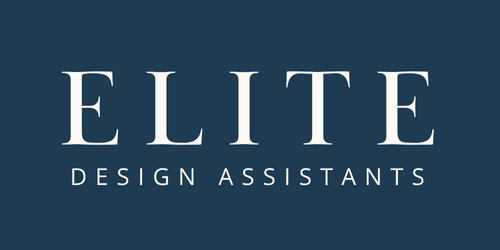Are You Accidentally Making It Easy for Clients to Pay Late?
/Late payments can be a frustrating (and surprisingly common) challenge for many interior designers. Beyond the financial hit, they can delay progress, complicate purchasing schedules, and strain client relationships.
But here’s the part that’s often overlooked: In many cases, late payments aren’t just the client’s fault. Sometimes, the way your systems are set up might actually be making it easier for clients to pay late, without you even realizing it.
This isn’t about blame. It’s about recognizing how small gaps in communication, structure, or process can unintentionally invite delays, and what you can do to change that.
Let’s take a look at a few ways interior designers might (unintentionally) be making late payments more likely:
1. Your Payment Terms Are Vague or Buried in the Fine Print
If your payment process and schedule are hidden halfway down your contract in a paragraph filled with legal jargon, don’t be surprised when clients miss a deadline. People skim. And when they do, they miss the details you worked hard to spell out.
Pro Tip: Make your payment schedule a clearly visible, standalone section in your welcome guide or onboarding documents. Use plain language. If a client can’t repeat your payment process back to you after one read-through, it’s too complicated.
2. You’re Not Reminding Them to Pay
Even well-meaning clients get busy. Without a reminder, they may simply forget to pay on time. If your process doesn’t include automated (or even manual) reminders before and after a due date, you’re missing an easy opportunity to stay at the forefront of their minds.
Pro Tip: Set up a system that sends reminders: one a few days before payment is due, one on the due date, and one polite follow-up if it's late. These don’t have to be aggressive, just timely, professional nudges that show you’re on top of your business.
3. You’re Making It (Unintentionally) Hard to Pay You
If clients aren’t sure how to pay you or the process feels clunky, it can cause unnecessary delays. If you accept only checks by mail, you’re creating unnecessary friction. Clients may mean to pay, but stamps, addresses, and busy schedules get in the way.
Pro Tip: Offer modern, easy payment options like credit cards, ACH, or platforms such as QuickBooks, Ivy, or Dubsado that allow one-click payments. Make it effortless for clients to pay promptly.
4. Invoicing Isn’t Consistent or Professional
Do you send invoices manually at irregular times? Do some clients get billed after the work is done, while others are billed before? Inconsistent invoicing makes it harder for clients to understand your process and manage their own budgets. It also undermines the professionalism of your business.
Pro Tip: Establish a predictable billing schedule (e.g., deposit, progress payment, final invoice) and stick to it across all projects. Use invoicing software that allows you to set templates, automate delivery, and track what’s been paid, so you never miss a step.
5. Payment Expectations Aren’t Reinforced During the Project
Payment terms should never be a “set it and forget it” part of your onboarding. If you don’t bring them up again until a payment is missed, it feels abrupt and reactive.
Pro Tip: Gently remind clients of upcoming payments as you wrap up project phases or schedule deliverables. For example, “Just a quick note: the next payment milestone is due next Friday before we place the orders.” This keeps money conversations feeling routine, not tense.
6. You're Avoiding Conversations About Money
It’s common in creative businesses to feel uncomfortable discussing money, but that discomfort can lead to unclear communication, unpaid invoices, and unnecessary resentment.
Pro Tip: Get comfortable being direct. Talking about payment isn’t “salesy”... it’s professional. You’re running a business, not doing a favor. Being clear, calm, and consistent builds trust and sets the tone for the entire client relationship.
7. Your Onboarding Doesn’t Set Payment Expectations
Clients shouldn’t be surprised by your invoicing process or payment deadlines. Clear payment expectations need to be part of your onboarding, from your welcome guide to your kickoff meeting. When onboarding is vague or casual about payments, late payments often happen simply because expectations weren’t clear.
Pro Tip: Use onboarding to set the tone and outline your payment policies. Include your payment schedule, invoicing methods, late fees, and accepted payment options. This isn’t about being rigid… it shows you’re professional and organized, helping clients feel confident and informed.
The Good News? This Is Totally Fixable
Getting paid on time starts with how you set up your client relationships. If you’re reading this and thinking, “Yep, I’m guilty of a few,” you’re far from alone.
Most interior designers didn’t start their business to become payment experts. That’s exactly why Elite Design Assistants supports designers like you by handling the behind-the-scenes systems that make your business run smoothly and your client relationships stronger.
You don’t have to fix everything at once. Start by picking one pain point and improving it. Step by step, you’ll build a professional, polished process that not only gets you paid on time, it elevates your whole client experience.
Bottom Line: Clients pay late for a lot of reasons. But with the right structure, support, and systems in place, you can do everything you can to make it easy for them to pay on time… which protects your peace of mind along the way.
xx, Danae









